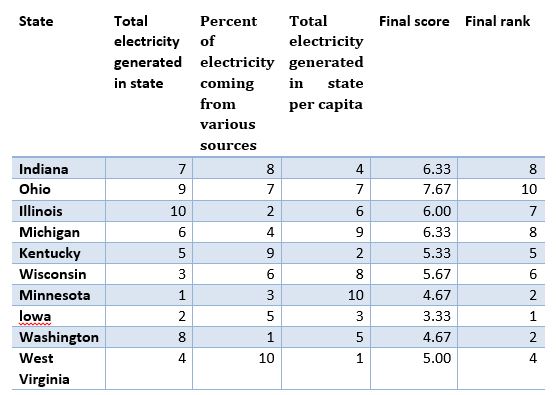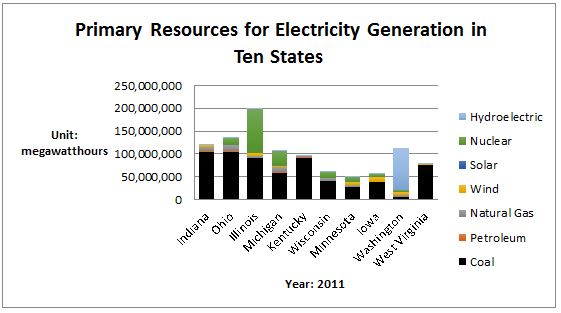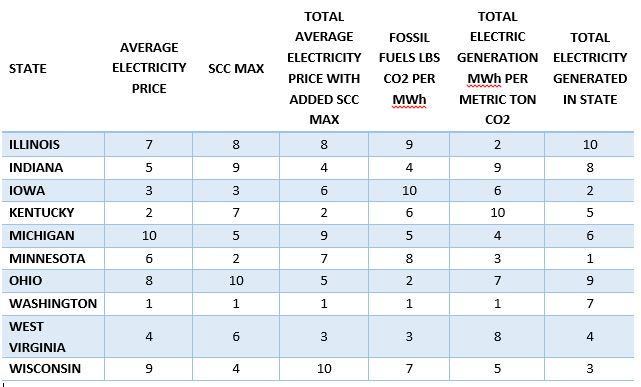Energy Profile Sub-Indicator
How energy is used is closely related to developmental sustainability. Analysis of it will reflect the basic situation of energy usage. In addition, it still involves energy supply and demand situations on market. With analysis of time series data, the trend of energy production can be easily found. Through the comparison of ten states, uniformity and otherness of energy use can be revealed. On one hand, it brings situation of energy production and possession. On the other hand, this part gives a smooth connection to mining, emission and policy.
The first section mainly talks about three metrics, which are total electricity generated in state, percent of electricity coming from various sources (only coal, petroleum, natural gas, wind, solar, nuclear and hydroelectric are included here), total electricity generated in state per capita.
The second section talks about four metrics, including average electricity price, social cost of carbon, rule 111D lbs CO2 per MWh and total generation MWh per metric ton of CO2. It tries to analyze social usage situation and relevant cost of using energy. Due to that, it gives discussion about energy usage sustainability from social facet.
Results
From what is mentioned-above, final rank actually is a compound indicator to show sustainability of different states. The best-ranked state means that it has relative low electrical generation, low electricity generation percent from coal and high electricity generation per capita. Low electricity generation will generally bring less emissions. Low electricity generation percent from coal also indicates that emissions from fossil fuel is less because coal is the primacy resource for electricity generation for most of states. At the same time, to guarantee daily demand of individual life, high total electricity generated in state per capita is necessary. The final metric is meaningful for policy makers. It gives the aspects policy maker should pay attention to. Indiana ranks 8th within 10 states. It is pretty low in these 10 states. Future policy should decrease fossil fuel use percent of electricity generation based satisfaction of every one’s daily energy demand.
Since upfront costs of renewable resources are pretty high, our society cannot adjust energy use structure to almost all renewable resources directly. After all, instability, economic factors and insufficient technologies will bring risks and difficulties. However, probably suggestions may still be that government should expand investment to technology of renewable resources. In addition, better management of resources use on demand side should arouse attention. Not only doesn’t expand energy production with increased efficiency, but also it reduces emissions.
Indiana really depends on coal to generate electricity now. To make sustainability of energy usage, support of renewable resources is necessary.
The social cost of producing electricity is relative high in Indiana. This high cost of generating electricity will burden Indiana to use electricity.
Indiana also generates high CO2 based on same unit electricity generation. It generates relative more CO2 than 8 states based on same unit of electricity generation. To stabilize usage of electricity, increasing usage efficiency by demand side management is necessary.



